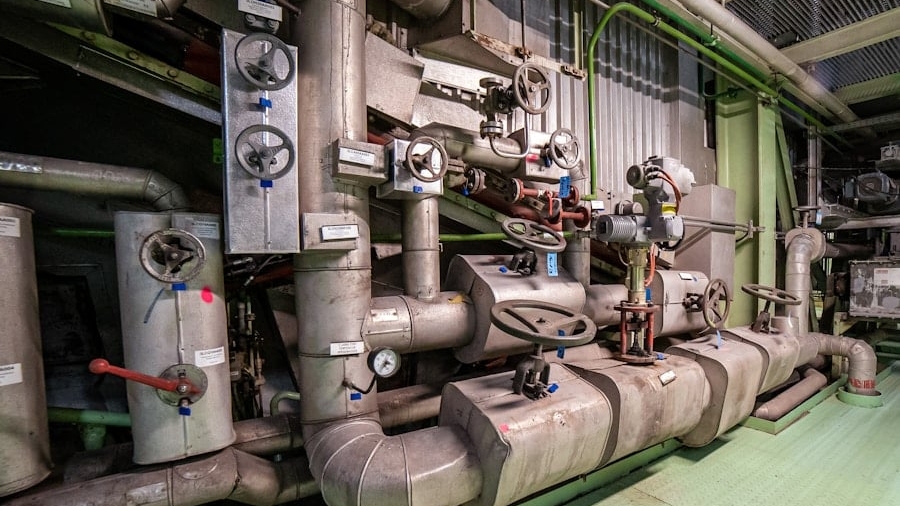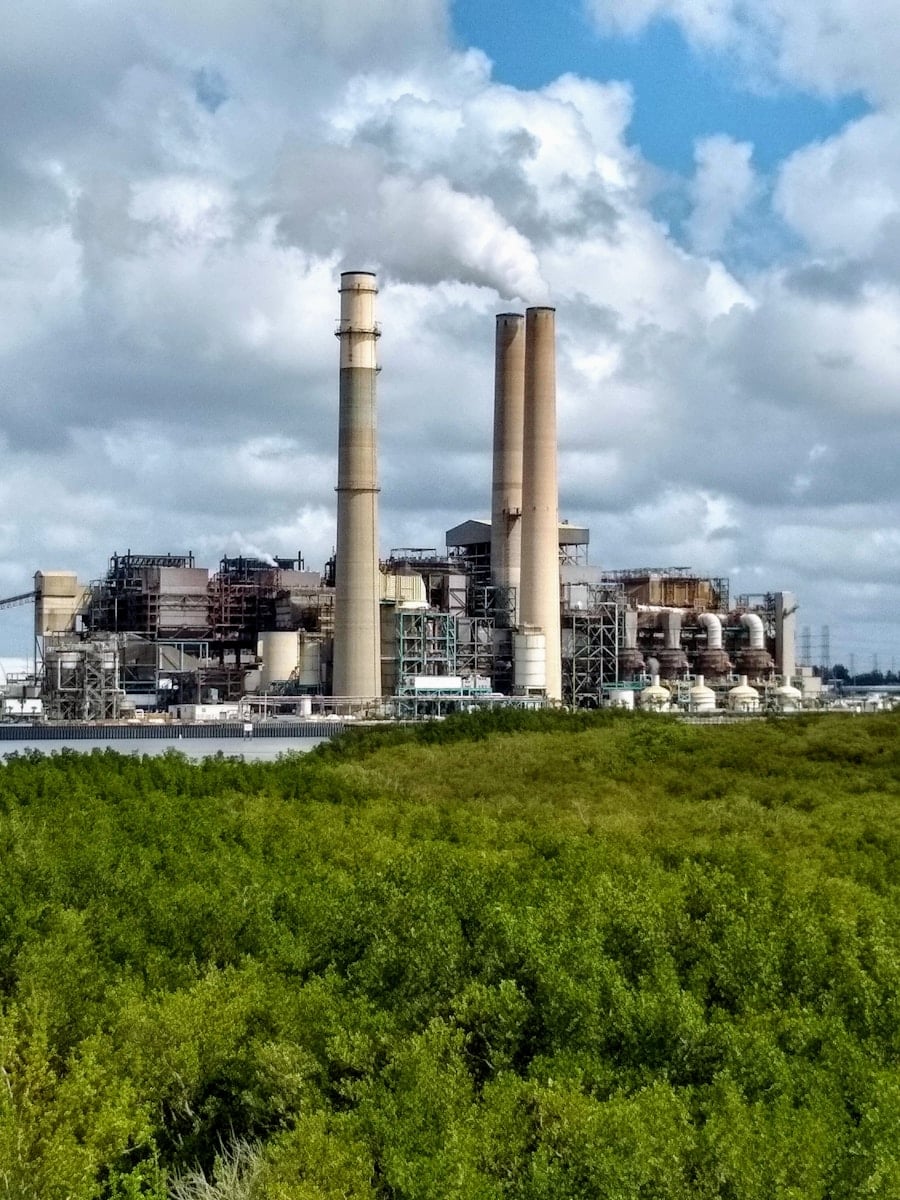Preventive maintenance is a critical aspect of power plant operations, aimed at ensuring the reliability and efficiency of equipment and systems. This proactive approach involves regular inspections, servicing, and repairs to prevent unexpected failures that could lead to costly downtimes or safety hazards. In the context of power generation, where the stakes are high and the demand for continuous energy supply is relentless, preventive maintenance becomes not just a best practice but a necessity.
The complexity of modern power plants, which often incorporate a variety of technologies and systems, makes it imperative to adopt a structured maintenance strategy that can adapt to evolving challenges. The implementation of preventive maintenance strategies can significantly enhance the lifespan of equipment, reduce operational costs, and improve overall plant performance. By identifying potential issues before they escalate into major problems, power plants can maintain optimal operational efficiency and ensure compliance with regulatory standards.
As the energy sector continues to evolve, integrating advanced technologies into maintenance practices has become increasingly important. One such advancement is the use of robotics, which offers innovative solutions to traditional maintenance challenges, thereby transforming how power plants approach preventive maintenance.
Key Takeaways
- Preventive maintenance is crucial for power plants to ensure efficient and reliable operations.
- Robotics plays a significant role in preventive maintenance by improving safety and efficiency.
- Various types of robotics, such as drones and crawlers, are used in power plant maintenance.
- The benefits of using robotics in preventive maintenance include cost savings and reduced downtime.
- Despite the advantages, challenges and limitations exist in the implementation of robotics in power plant maintenance.
The Importance of Robotics in Preventive Maintenance
Enhancing Efficiency and Reducing Risk
The integration of robotics into preventive maintenance practices in power plants, represents a paradigm shift in how maintenance tasks are performed. Robotics can enhance the efficiency and effectiveness of maintenance operations by automating routine tasks that are often labor-intensive and time-consuming. This automation not only reduces the workload on human operators but also minimizes the risk of human error, which can lead to safety incidents or equipment damage.
Operating in Hazardous Environments
Furthermore, robots can operate in hazardous environments where human presence may pose significant risks, such as high radiation areas or extreme temperatures. Robotics also facilitates real-time data collection and analysis, which is crucial for predictive maintenance strategies.
Data-Driven Maintenance and Cost Reduction
Equipped with advanced sensors and imaging technologies, robots can monitor equipment conditions continuously, providing valuable insights into performance trends and potential failure points. This data-driven approach allows maintenance teams to make informed decisions about when and how to perform maintenance tasks, ultimately leading to more efficient resource allocation and reduced operational costs.
Types of Robotics Used in Power Plant Maintenance
Various types of robotics are employed in power plant maintenance, each designed to address specific tasks and challenges. One prominent category is inspection robots, which are equipped with cameras and sensors to conduct visual inspections of equipment and infrastructure. These robots can navigate through confined spaces or hazardous environments, capturing high-resolution images and data that can be analyzed for signs of wear or damage.
For instance, drones are increasingly used for aerial inspections of cooling towers, smoke stacks, and other hard-to-reach structures, providing a comprehensive view without the need for scaffolding or ladders. Another significant type of robotics utilized in power plant maintenance is robotic arms or manipulators. These devices are capable of performing intricate tasks such as tightening bolts, replacing components, or conducting repairs in areas that may be difficult for human technicians to access.
Robotic arms can be programmed to execute precise movements with high accuracy, ensuring that maintenance tasks are completed efficiently and correctly. Additionally, mobile robots equipped with autonomous navigation capabilities are being deployed for routine inspections and monitoring tasks across large facilities, further enhancing operational efficiency.
Benefits of Using Robotics in Preventive Maintenance
The adoption of robotics in preventive maintenance offers numerous benefits that extend beyond mere efficiency gains.
By deploying robots to perform high-risk tasks—such as inspecting high-voltage equipment or working in confined spaces—plants can significantly reduce the likelihood of accidents and injuries among human workers.
This shift not only protects personnel but also fosters a culture of safety within the organization. Moreover, robotics can lead to substantial cost savings over time. While the initial investment in robotic technology may be considerable, the long-term benefits often outweigh these costs.
Robots can operate continuously without fatigue, allowing for more frequent inspections and maintenance activities. This increased frequency helps identify issues earlier in their development, reducing the likelihood of catastrophic failures that could result in expensive repairs or prolonged outages. Additionally, by streamlining maintenance processes and reducing downtime, power plants can enhance their overall productivity and profitability.
Challenges and Limitations of Robotics in Power Plant Maintenance
Despite the numerous advantages that robotics brings to preventive maintenance in power plants, several challenges and limitations must be addressed for successful implementation. One primary concern is the high initial cost associated with acquiring and integrating robotic systems into existing operations. Many power plants operate on tight budgets, making it difficult to justify significant capital expenditures on new technologies without clear evidence of return on investment.
Another challenge lies in the complexity of integrating robotics with existing systems and workflows. Power plants often utilize a variety of legacy equipment and software platforms that may not be compatible with modern robotic technologies. This lack of interoperability can hinder the seamless integration of robotics into maintenance practices, requiring additional investments in training and system upgrades.
Furthermore, there is a need for skilled personnel who can operate and maintain robotic systems effectively; this may necessitate additional training programs or hiring specialized staff.
Case Studies of Successful Implementation of Robotics in Power Plant Maintenance
Several power plants around the world have successfully integrated robotics into their preventive maintenance strategies, showcasing the potential benefits of this technology. One notable example is the use of drones at a nuclear power plant in France for routine inspections of cooling towers and other critical infrastructure. By employing drones equipped with thermal imaging cameras, plant operators were able to identify heat anomalies indicative of potential issues much earlier than traditional inspection methods would allow.
This proactive approach not only improved safety but also reduced inspection times significantly. Another case study involves a coal-fired power plant in the United States that implemented robotic arms for boiler maintenance tasks. The robotic arms were programmed to perform precise cleaning operations within the boiler system, which had previously required extensive manual labor and posed significant safety risks due to high temperatures and confined spaces.
By automating these tasks, the plant was able to reduce maintenance time by over 30%, leading to increased operational efficiency and reduced downtime during scheduled outages.
Future Trends and Developments in Robotics for Power Plant Maintenance
As technology continues to advance at a rapid pace, the future of robotics in power plant maintenance looks promising. One emerging trend is the development of artificial intelligence (AI) capabilities within robotic systems. By incorporating AI algorithms, robots can learn from past inspections and maintenance activities, improving their ability to predict potential failures based on historical data patterns.
This predictive capability will enable power plants to transition from reactive maintenance strategies to more proactive approaches that optimize resource allocation. Additionally, advancements in collaborative robotics—where robots work alongside human technicians—are expected to play a significant role in future maintenance practices. These collaborative robots (cobots) can assist human workers by taking on repetitive or physically demanding tasks while allowing technicians to focus on more complex problem-solving activities.
This synergy between humans and robots will enhance overall productivity while maintaining high safety standards.
The Role of Robotics in Ensuring Efficient and Reliable Power Plant Operations
The integration of robotics into preventive maintenance practices represents a transformative shift in how power plants operate. By leveraging advanced technologies such as drones, robotic arms, and AI-driven analytics, power plants can enhance their maintenance strategies significantly. The benefits—ranging from improved safety and reduced costs to increased operational efficiency—underscore the importance of adopting robotic solutions in an industry where reliability is paramount.
As power generation continues to evolve amidst growing demands for clean energy and sustainability, the role of robotics will only become more critical. Embracing these innovations will not only help power plants meet current operational challenges but also position them for future success in an increasingly competitive landscape. The journey toward fully automated preventive maintenance may still be underway; however, the strides made thus far indicate a promising future where robotics plays an integral role in ensuring efficient and reliable power plant operations.
In a recent article from How-To Geek, the importance of utilizing technology in various industries, including power plants, is highlighted. The article discusses how advancements in robotics are revolutionizing preventive maintenance practices in power plants, ultimately leading to increased efficiency and reduced downtime. This aligns with the topic of “The Role of Robotics in Preventive Maintenance for Power Plants” as it emphasizes the significant impact technology can have on optimizing operations in critical infrastructure.
FAQs
What is preventive maintenance for power plants?
Preventive maintenance for power plants involves regularly scheduled inspections, repairs, and replacements of equipment to prevent breakdowns and ensure the efficient and reliable operation of the plant.
How can robotics be used in preventive maintenance for power plants?
Robotics can be used in preventive maintenance for power plants to perform tasks such as inspections, cleaning, and repairs in hard-to-reach or hazardous areas, reducing the need for human intervention and improving safety and efficiency.
What are the benefits of using robotics in preventive maintenance for power plants?
The use of robotics in preventive maintenance for power plants can lead to improved safety for maintenance personnel, reduced downtime for equipment, increased efficiency in maintenance tasks, and cost savings for the plant.
What types of robotics are commonly used in preventive maintenance for power plants?
Common types of robotics used in preventive maintenance for power plants include drones for aerial inspections, crawlers for inspecting and cleaning confined spaces, and robotic arms for performing repairs and replacements on equipment.
Are there any challenges or limitations to using robotics in preventive maintenance for power plants?
Challenges and limitations to using robotics in preventive maintenance for power plants may include the initial cost of implementing robotics, the need for specialized training for maintenance personnel, and the limitations of current robotic technology in performing certain maintenance tasks.



